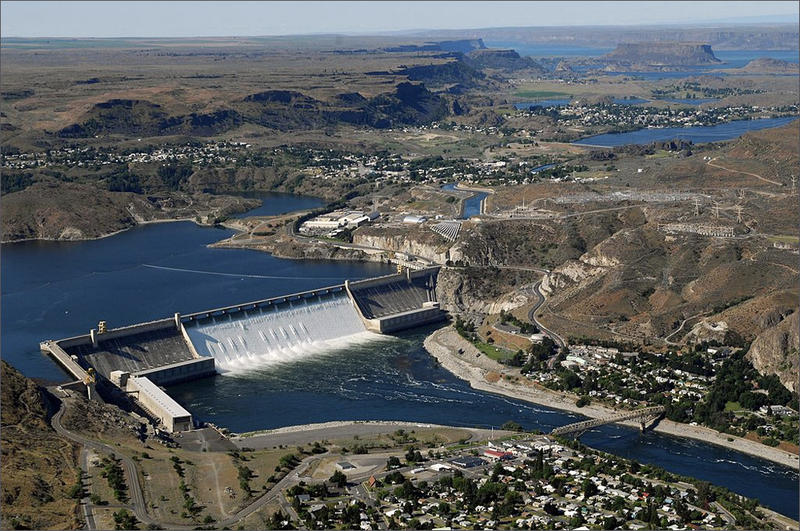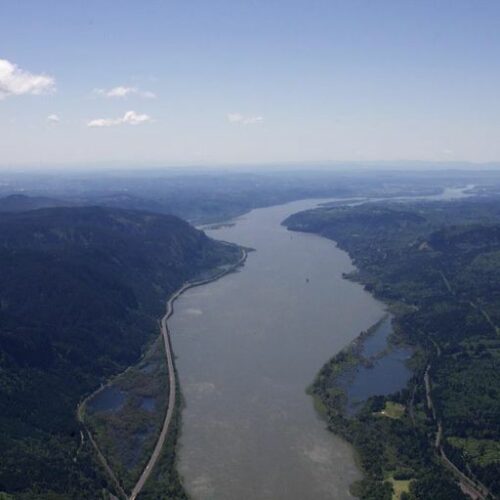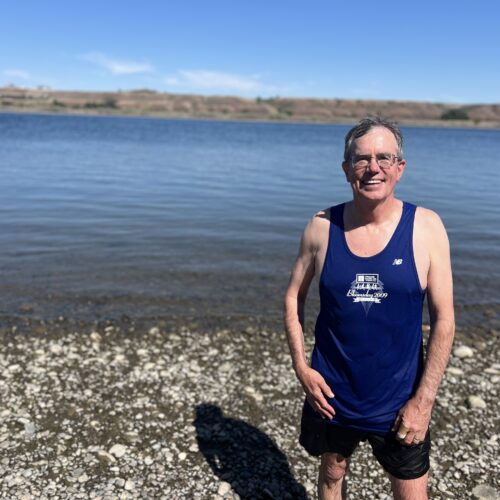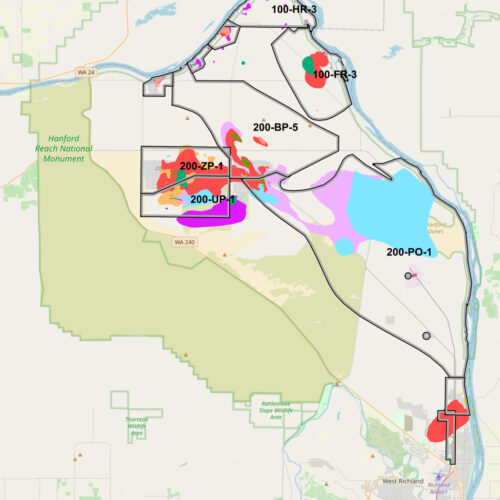
Tribes Say Fish Passage Above Grand Coulee Dam Is Possible
Read On
It’s been nearly 80 years since salmon and steelhead made it past Chief Joseph and Grand Coulee dams in Washington’s Upper Columbia Basin. It’s long been a goal for tribes to see the fish return to the blocked waters where they once spawned.
A team of researchers presented their findings on Tuesday to the Northwest Power and Conservation Council. In short, they said, salmon can survive in the upper reaches of the Columbia Basin, and fish passage needs to happen at the two dams.
For several years biologists have looked into scenarios for salmon above the dams – if there was enough habitat available, if pathogens and predators wouldn’t cause too much damage, if there were even ways to get the fish around the concrete structures.
“We feel strongly it’s time to start investing in the Upper Columbia. We’ve been the most impacted and the least mitigated, so it’s important to look at how that funding hasn’t made it above (the dams), just like the salmon,” said John Sirois, with the Upper Columbia United Tribes.
To bring fish back to the region, the researchers looked at 40 different stocks of fish and five different species.
Baseline estimates show there could be up to 24,000 harvested adult summer and fall chinook, with 14,000 fish making it past anglers. Computer models showed there could be 21,000 harvested adult sockeye, with 26,000 fish returning to spawning grounds.
They checked for pathogens that could harm fish in the blocked area and found only one pathogen that hadn’t made it past the two dams.
“Anadromy brings pathogens, that’s part of the deal. The important take-home point is: In any reintroduction, we need to be careful and cognizant of that,” said Casey Baldwin, with The Confederated Tribes of the Colville Reservation.
The researchers found there is ample habitat available, although much of the habitat in the Spokane Sub-Basin is blocked by dams on the Spokane River. The researchers estimated there could be more than 136 miles of habitat reach for spring chinook salmon and 452 miles for steelhead of habitat not affected by those diversions.
“There is obviously large quantities of habitat in that area, enough to support a substantial increase in the number of adults being produced. Passage technology is out there,” said Tom Biladeau, with The Coeur d’Alene Tribe.
One new way to get fish around the dams could trap and collect the fish are called floating surface collectors. They attract juvenile fish, which can then be transferred by truck or barge around the dams. When the researchers removed those collectors from the models, adult spawning numbers dropped dramatically.
“That’s just the model pointing out how much influence some of these juvenile collection facilities may have,” Biladeau said.
Other ways to get the adult fish around the dams could include collecting fish at the Chief Joseph hatchery and hauling them around the dam or a fish ladder down stream of the dam.
At Grand Coulee Dam, the largest on the Columbia, there could be another trap and haul system or potentially the use of a system that’s been dubbed the “salmon cannon,” which can suck fish up and send them over big obstructions.
For the second part of the study, the tribes would test salmon reintroductions in the area. One big thing to study could be how invasive northern pike affect salmon above Grand Coulee Dam – the predatory fish tend to eat pretty much any fish they come across.
The tribes said they’re not sure what would happen in that situation.
“The plan moving forward is to have three or four years of releases (of salmon), and to be monitoring that, looking at what that impact is over that period of time. Hopefully we’ll have enough information to know, ‘Is the effort of suppression sufficient right now?’” said Brent Nichols, with the Spokane Tribe of Indians.
The next step in getting salmon above the dams is for the tribes to work with dam operators and figure out the price tag of several ways to get the fish around the dams.
Related Stories:

Preliminary agreement reached for a modernized Columbia River Treaty
The Columbia River west of the Gorge as it heads toward Portland and out to the Pacific Ocean. (Credit: Amelia Templeton / OPB) Listen (Runtime 1:01) Read After more than

‘The water’s nice today’: One man’s quest to jump in the Columbia River for 25 years
For the past 25 years, Greg Patton has spent at least a few moments each month jumping in the Columbia River. (Credit: Courtney Flatt / Northwest News Network) Listen (Runtime

New tool tracks contaminated groundwater at Hanford, other DOE sites
A snapshot of the Hanford cleanup site showing the various groundwater plumes across the site. (Credit: U.S. Department of Energy / Office of Environmental Management) Listen (Runtime 1:00) Read A















